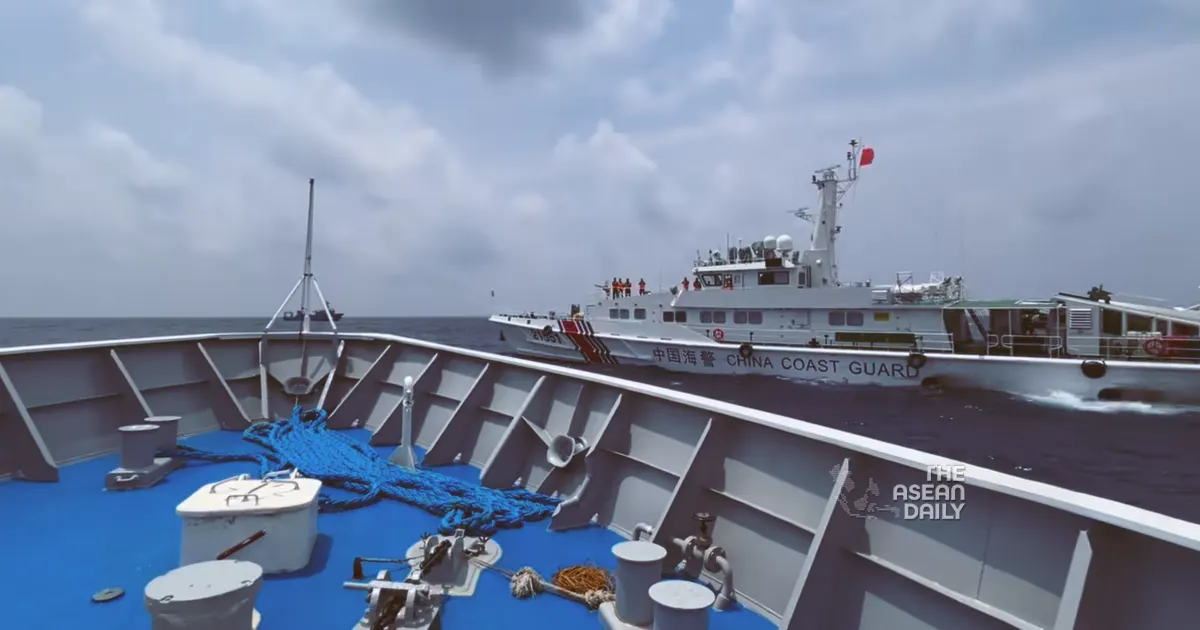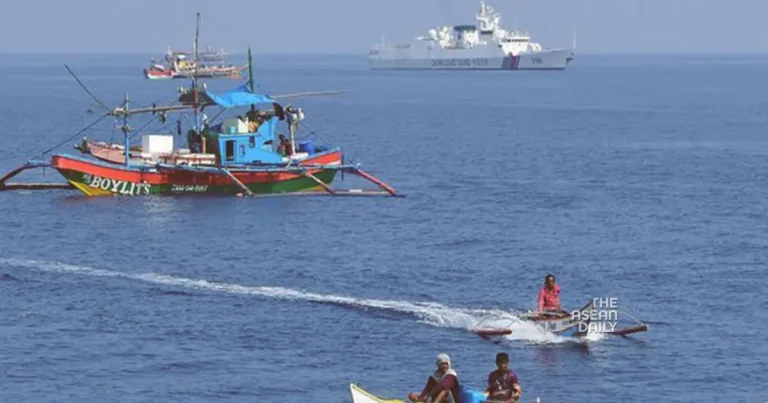20-12-2023 (MANILA) The South China Sea has become a hotbed of tension and conflict, and Philippine President Ferdinand Marcos Jr believes it calls for extraordinary measures. Following reports of China using water cannons against Philippine vessels in disputed areas of the sea, President Marcos Jr spoke out last Saturday (Dec 16), underlining the need for decisive action.
These incidents mark the fourth instance of such clashes, prompting the Philippines to file its 64th diplomatic protest against China this year. Since assuming power in June 2022, President Marcos Jr has lodged over 130 protests against China.
A Recap of Events in the South China Sea in 2023
The Philippines has reported several incidents in the South China Sea throughout the year. These include:
- In February, the China Coast Guard aimed a “military-grade” laser at crew members of a Philippine Coast Guard ship.
- On separate occasions in June and December, over 100 Chinese fishing or maritime militia vessels swarmed disputed reefs, shoals, and other features.
- China installed a 300m floating barrier near Scarborough Shoal, violating international law, according to the Philippines, which removed it.
- Chinese vessels engaged in clashes with Philippine resupply missions in August, November, and December, using water cannons and resulting in collisions and damaged boats.
Each occurrence has been accompanied by a war of words. The Philippines has condemned China’s “unprovoked acts of coercion” as violations of international law, causing damage to maritime assets and endangering Filipino lives.

China, on the other hand, claims it is conducting “law enforcement activities” to protect its indisputable sovereignty in the South China Sea. It justifies its actions based on what it refers to as “historic rights” to the region.
The Ownership Debate: Does the South China Sea Belong to China?
The question of ownership is a contentious one. In 2009, China presented its “nine-dash” line to the United Nations, claiming over 80% of the South China Sea. However, other Southeast Asian countries, including the Philippines, Vietnam, Malaysia, and Brunei, also assert their rights to portions of the sea. The South China Sea is critical for global trade, accounting for over US$3 trillion annually, and is a vital source of fishing and gas reserves.

After a 2012 standoff between the Philippines and China in Scarborough Shoal, the Philippines pursued arbitration at The Hague. In 2016, the arbitral tribunal ruled that China’s claims had “no legal basis.” China dismissed the ruling as “null and void,” asserting that it had historic rights over the South China Sea.
To understand the context further, we must go back to 2002 when China and members of the Association of Southeast Asian Nations (ASEAN) signed a non-binding declaration, pledging not to inhabit or develop uninhabited features in the South China Sea. However, in 2007, China began deploying maritime forces and establishing military bases in the disputed Spratly Islands archipelago, contradicting its earlier commitment.
In December 2022, Western media reported fresh reclamation projects by China in the South China Sea, although Beijing denied these allegations.

The Struggle for Resolution: China and the Philippines’ Efforts
Before the February incident involving the laser-pointing, President Marcos Jr paid a state visit to China, during which he and President Xi Jinping agreed to establish a direct communication line to address maritime disputes. However, a high-ranking Philippine official described this channel as having “limited” effectiveness.
President Marcos Jr has expressed frustration with the “traditional methods of diplomacy” employed in dealing with China, which have yielded little progress over the years. In response, Beijing stated that the maritime disputes do not define the entirety of China-Philippine relations and expressed openness to resolving conflicts through dialogue and consultation.
President Marcos Jr’s administration takes a different stance from his predecessor, Rodrigo Duterte. While Duterte downplayed the 2016 arbitral ruling and sought to abrogate the Visiting Forces Agreement with the United States, President Marcos Jr has pledged not to concede any territory and expanded defense cooperation with the US. The Philippines has also engaged in joint maritime drills with Australia and Japan in the South China Sea, with these countries supporting Manila throughout its confrontations with Beijing.
Independent analyst Andrea Chloe Wong suggests that the Marcos administration aims to mitigate the Philippines’ limited defense capabilities. However, she cautions that if Manila is perceived as leaning more towards the West, it could strain bilateral relations with China.
China has criticized the Philippines for granting American forces access to its bases, including one near the South China Sea, accusing the US of stirring tensions in the region.
The Potential for Escalation: A Dangerous Scenario?
In recent weeks, concerns have arisen about the possibility of the South China Sea escalating into a conflict similar to the Russia-Ukraine or Israel-Hamas situations. One American magazine even referred to it as “the most dangerous conflict no one is talking about.” The Philippine ambassador to the US stated that the South China Sea, rather than being a localized conflict, has the potential to become a global security challenge.
The South China Sea is a highly strategic region due to its crucial shipping lanes, rich fishing grounds, and potential oil and gas reserves. As tensions continue to rise and incidents between China and other claimant states persist, there is a real risk of miscalculations or escalations leading to a larger conflict.
Several factors contribute to the volatile situation in the South China Sea. China’s assertive actions, including the construction of military installations on disputed islands and reefs, have raised concerns among neighboring countries and the international community. The United States has also increased its presence in the region, conducting freedom of navigation operations and supporting its allies and partners.
The lack of a binding code of conduct among claimant states further exacerbates the situation. While negotiations for a code of conduct have been ongoing for years, progress has been slow. A binding code of conduct could provide a framework for managing disputes and preventing escalations.
The involvement of external powers adds another layer of complexity to the situation. The United States has emphasized its commitment to freedom of navigation and has been conducting naval patrols and exercises in the South China Sea. Other countries, such as Japan and Australia, have also increased their engagement in the region to support stability and uphold international law.
To address the challenges in the South China Sea, a multilateral approach is essential. ASEAN plays a crucial role in facilitating dialogue and negotiations among claimant states. The ASEAN-led process of developing a code of conduct should be expedited and strengthened to ensure a peaceful resolution to the disputes.
Furthermore, diplomatic efforts should be intensified to encourage all parties to uphold international law, including the United Nations Convention on the Law of the Sea (UNCLOS). The arbitral ruling in 2016, which invalidated China’s “nine-dash line,” should be respected and upheld.
Dialogue and confidence-building measures are crucial to prevent misunderstandings and manage tensions. Hotlines and direct communication channels, as proposed by President Marcos Jr, can help de-escalate incidents and avoid unintended confrontations. Regular meetings between defense and foreign ministers of claimant states can also foster understanding and cooperation.




